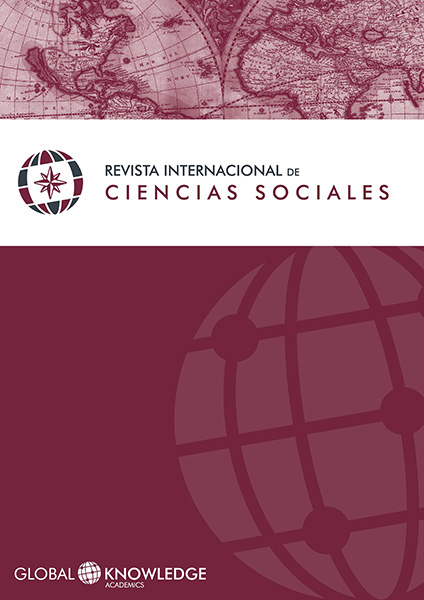Paradoxo e implicações na criação da nova Agência Nacional de Assistência Técnica e Extensão Rural: um passo para trás?
DOI:
https://doi.org/10.37467/gka-revsocial.v5.1343Palabras clave:
ANATER, PNATER, política pública, extensão rural, questão agráriaResumen
O projeto de lei para a criação da Agência Nacional de Assistência Técnica e Extensão Rural (ANATER) foi aprovado no dia 7 de agosto de 2013, por unanimidade na Comissão de Agricultura, Pecuária, Abastecimento e Desenvolvimento Rural da Câmara dos Deputados. Com o objetivo de ampliar o alcance a novas tecnologias pelos produtores rurais de todo o país. Este trabalho visa sintetizar e criticar através de viés histórico da extensão rural a criação da nova ANATER por meio de avaliação dos seus objetivos, forma de atuação, organização administrativa e perspectivas futuras à sua atuação. A criação da nova agência remete ao histórico da extensão rural no país. A extensão rural vai muito além da implementação de novas técnicas de produção e aumento de renda e lucro para as famílias do campo, ela atinge níveis de estrutura política, econômica, social e filosóficas, sendo, portanto passível de sofrer variadas interferências e modificações, que podem ser tanto a nível sócio-cultural local como em níveis nacional. A criação de uma agência nacional interfere diretamente nessas variáveis, e deve ser avaliada as características locais e individuais de cada região para que se possa otimizar e adaptar de maneira correta a extensão rural e suas ações.
Descargas
Estadísticas globales ℹ️
|
461
Visualizaciones
|
214
Descargas
|
|
675
Total
|
|
Citas
Brasil. Palácio do Planalto. Julho 04, 2014. http://www2.planalto.gov.br/acompanhe-o-planalto/discursos/discursos-da-presidenta/discurso-da-presidenta-da-republica-dilma-rousseff-durante-cerimonia-de-lancamento-do-plano-safra-da-agricultura-familiar-2013-2014 (accessed abril 20, 2015).
Brosler, T. M., de Oliveira, E.R.L. e Bergamasco, S.P.P. (2009). Métodos na nova extensão rural no Brasil: caminho para a participação, de quem? Sociedade Brasileira de Economia, Administração e Sociologia Rural, 25 de Julho de 2009.
Caporal. “iica.org.uy.” IICA. 2005. http://www.iica.org.uy/onli/foro.../_NOVA_ATERCaporal.pdf (acesso em 30 de 1 de 2015).
dos Santos, C. M. (1993). Contribuição ao estudo da extensão rural pública em Sergipe: o caso da Microrregião Geográfica de Tobias Barreto. Universidade Federal de Sergipe.
III EIA. “sindaspisc.org.br.” sindaspisc. 03 de Agosto de 2013. http://www.sindaspisc.org.br/documentos/Mo%C3%A7%C3%A3o%20de%20rep%C3%BAdio%20a%20cria%C3%A7%C3%A3o%20e%20concep%C3%A7%C3%A3o%20da%20ANATER.dot.pdf (acesso em 4 de Janeiro de 2015).
Feliciano, M. (2013). Criação, estratégias de uso e retenção do conhecimento. Universidade Federal de Santa Catarina.
Lisita, F. O. (2006). Considerações sobre a extensão rural no Brasil. Universidade Federal de Uberlândia Instituto de Geografia.
MAPA. Ministério da agricultura. (2015). http://www.agricultura.gov.br/ministerio/missao (accessed abril 27, 2015).
Marçolla Moreira, A. Z. e Araújo, J. G. F. (2015). Comunicação, difusão e extensão rural: uma reflexão crítica. Intercom. http://www.intercom.org.br/papers/xxii-ci/gt11/11z11 (acesso em 16 de 1 de 2015).
Masseli, M. C. (1998). Extensão rural entre os sem terra. Extensão rural entre os sem terra. Piracicaba: UNIMEP.
MDA. (2013). Plano nacional de desenvolvimento rural sustentável e solidário. Matriz, Brasília: Brasil.
Olinger, G. (2013). Extensão rural e Anater. Agropecuária Catarinense (Brazil), 26(2), pp. 19-22.
Pimentel A. (2002). O método da análise documental: seu uso numa pesquisa historiográfica. Cad Pesquisa, 114, pp. 179-195. DOI: https://doi.org/10.1590/S0100-15742001000300008
Pereira, B. e Spink, P. (1998). Sobre o desenho do Estado: uma perspectiva agent x principal. Reforma do Estado e Administração Pública Gerencial.
Schneider, S., Mattei, L. e Cazella, A.A. (2004). Histórico, caracterização e dinâmica recente do PRONAF Programa Nacionam de Fortalecimento da Agricultura Familiar. Políticas Públicas e Participação Social no Brasil, pp. 21-50.
do Prado, E. (2001). Fundamentos da crise da extensão rural no Brasi. Tese de Doutorado, Belo Horizonte: UFMG.
Viebrantz. (2008). A Extensão Rural: ambiente, agricultura e associativismo. Revista Grifos, 25.
Wald e Moraes. (1999). Agências reguladoras Fonte. Revista de informação legislativa, 36(141), pp. 143-171.
Zampese, E. R. de S. (2011). Estudo de caso de "coopetição" no compartilhamento de infra-estrutura entre operadoras de telecomunicações no Brasil. SIMPOI.
Nunes, R. (200). Agricultura familiar: custos de transações, forma organizacional e eficiência. Doc Diss. São Paulo: Faculdade de Economia, Administração e Contabilidade da Universidade de São Paulo.
Portilho, M. S. B. (1998). Extensão Rural: o fio e a trama da construção da representação social do pequeno produtor. Master Diss. Uberlândia: Universidade Federal de Uberlândia.
Descargas
Publicado
Cómo citar
Número
Sección
Licencia
Los autores/as que publiquen en esta revista aceptan las siguientes condiciones:
- Los autores/as conservan los derechos de autor.
- Los autores/as ceden a la revista el derecho de la primera publicación. La revista también posee los derechos de edición.
- Todos los contenidos publicados se regulan mediante una Licencia Atribución/Reconocimiento-SinDerivados 4.0 Internacional. Acceda a la versión informativa y texto legal de la licencia. En virtud de ello, se permite a terceros utilizar lo publicado siempre que mencionen la autoría del trabajo y a la primera publicación en esta revista. Si transforma el material, no podrá distribuir el trabajo modificado.
- Los autores/as pueden realizar otros acuerdos contractuales independientes y adicionales para la distribución no exclusiva de la versión del artículo publicado en esta revista (p. ej., incluirlo en un repositorio institucional o publicarlo en un libro) siempre que indiquen claramente que el trabajo se publicó por primera vez en esta revista.
- Se permite y recomienda a los autores/as a publicar su trabajo en Internet (por ejemplo en páginas institucionales o personales), una vez publicado en la revista y citando a la misma ya que puede conducir a intercambios productivos y a una mayor y más rápida difusión del trabajo publicado (vea The Effect of Open Access).













